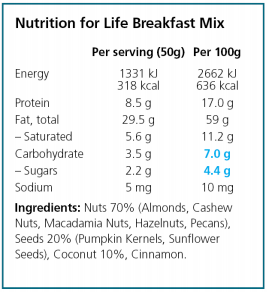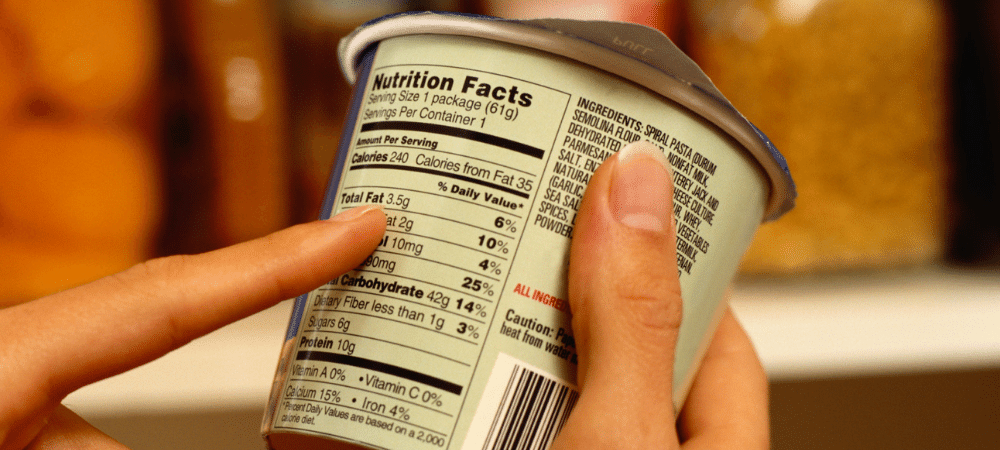FOOD LABELS
Food labels can be tricky to read and understand. The following information will help you make more informed
decisions about how to fuel your body.
Ingredients
Ingredients are listed in order of quantity. Avoid products that list carbohydrates, sugar or highly processed oils as one of the first few ingredients.
- Carbohydrates to look out for include:
Wheat, oats, flour, rice, barley, corn and potato. - Sugar may be referred to as:
Barley malt, beet sugar, brown sugar, buttered syrup, cane juice crystals, cane sugar, caramel, corn syrup, corn syrup solids, confectioner’s sugar, carob syrup, castor sugar, date sugar, demerara sugar, dextran, dextrose, diastatic malt, diatase, ethyl maltol, fructose, fruit juice, fruit juice concentrate, galactose, glucose, glucose solids, golden sugar, golden syrup, grape sugar, high fructose corn syrup, honey, icing sugar, invert sugar, lactose, maltodextran, maltose, malt syrup, maple syrup, molasses, muscovado sugar, panocha, raw sugar, refiner’s sugar, rice syrup, rice malt syrup, sorghum syrup, sucrose, treacle, turbinado sugar and yellow sugar - Highly processed oils include:
Sunflower oil, grapeseed oil, corn oil, cottonseed oil, soybean oil, peanut oil, canola oil, safflower oil and vegetable oil
BEWARE of the ‘no sugar’ label, this usually means artificial sweeteners.
Nutrition information
A nutrition information panel displays the amount of energy (kilojoules), protein, fat (total), saturated fat,
carbohydrate (total), sugars and sodium in a product ‘per serving’ or ‘per 100g’.
The amount of sugar listed makes up part of the carbohydrate listed.
Additional nutrients such as vitamins and minerals may also be listed, usually to support any nutritional claims the product is making.
Serving sizes are determined by the manufacturer of the product. This explains why the serving size sometimes
varies between products. We recommend using ‘per 100g’ to compare similar products across different brands and ‘per serving’ to determine your total carbohydrate and sugar intake per day.
Teaspoons of sugar
to determine the number of teaspoons of sugar in a product, you divide the
carbohydrate or sugar by 4.
per serve. If we divide 23.3g by 4 we find there are 6 teaspoons of sugar in
just one serve.

Aim for less than 4g of sugar per 100g of product and less than 24g of sugar (6 teaspoons) per day in line with the World Health Organization (WHO) recommendations.
Food label comparison








